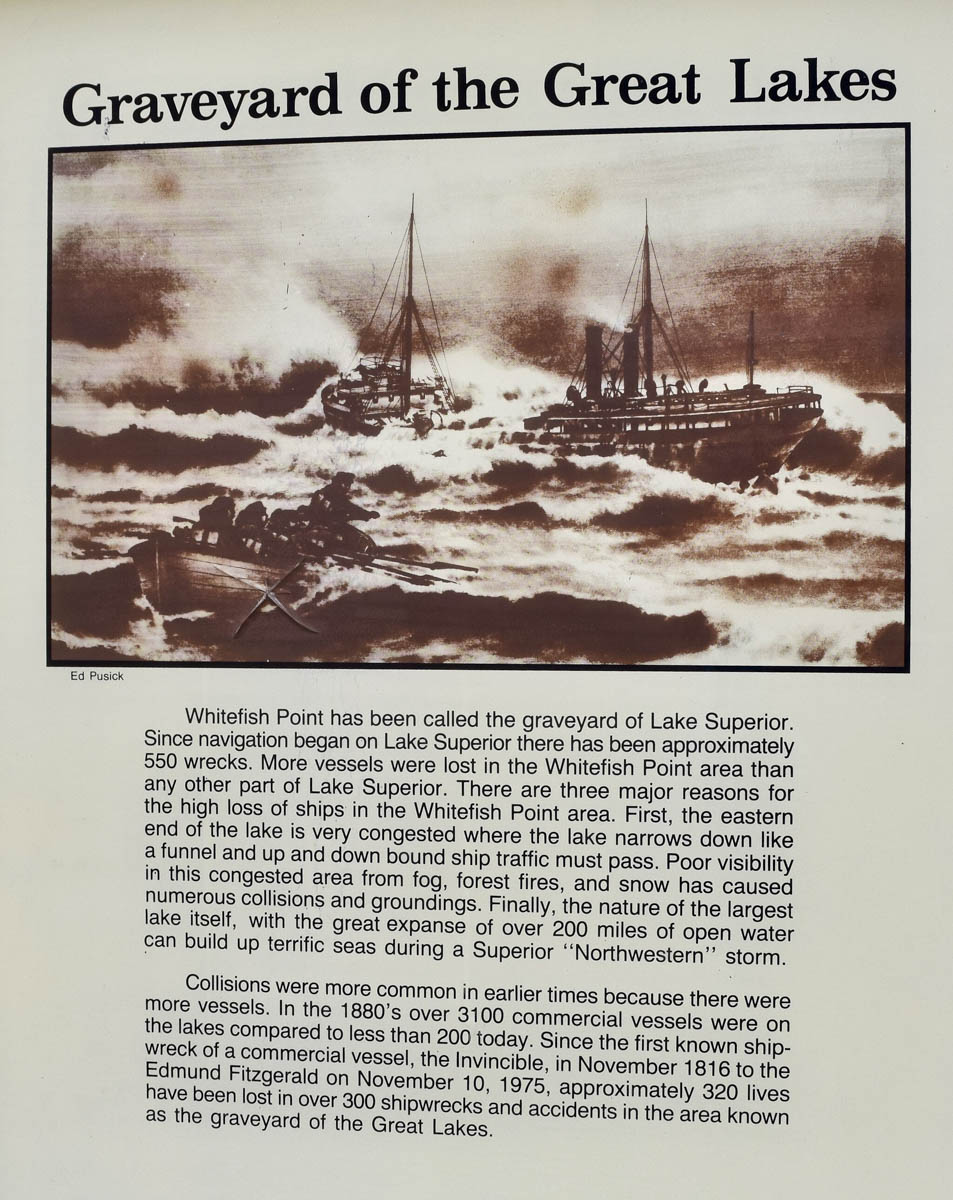The southern shore of Lake Superior between Grand Marais, Michigan, and Whitefish Point is known as the Graveyard of the Great Lakes, however Grand Island has been suggested as a possible western limit. This is the area of Lake Superior where the most shipwrecks have occurred.

In Canadian (Ontario) seas, shortly after 7:10 p.m., Edmund Fitzgerald unexpectedly sunk 530 feet (88 fathoms; 160 m) below the surface. It was approximately 17 miles (15 nautical miles; 27 km) from Whitefish Bay, close to the twin cities of Sault Ste. Marie, Michigan, and Sault Ste. Marie, Canada.
Of the 550 wrecks in Lake Superior, more than 200 are near Whitefish Point. Ships cannot “ride out” storms in any natural harbours for a distance west of Whitefish Bay.As late as the 1900s, weather forecasting was described as “a haphazard process, very imprecise and unreliable.” A ship might not be aware of the weather it was travelling into or heading toward.
Following the construction of the St. Lawrence Seaway, all Lake Superior interlake traffic passed at Whitefish Point or close to it.
The Mataafa Storm in November 1905 and the Great Lakes Storm in 1913 are two storms that claimed several ships.
Even after spending centuries beneath, wrecks are sometimes in fairly good shape because of the cold, pure water.
The Graveyard of the Great Lakes has been the subject of a documentary and an Apple TV segment
These shipwrecks are now protected by the Whitefish Point Underwater Preserve.







